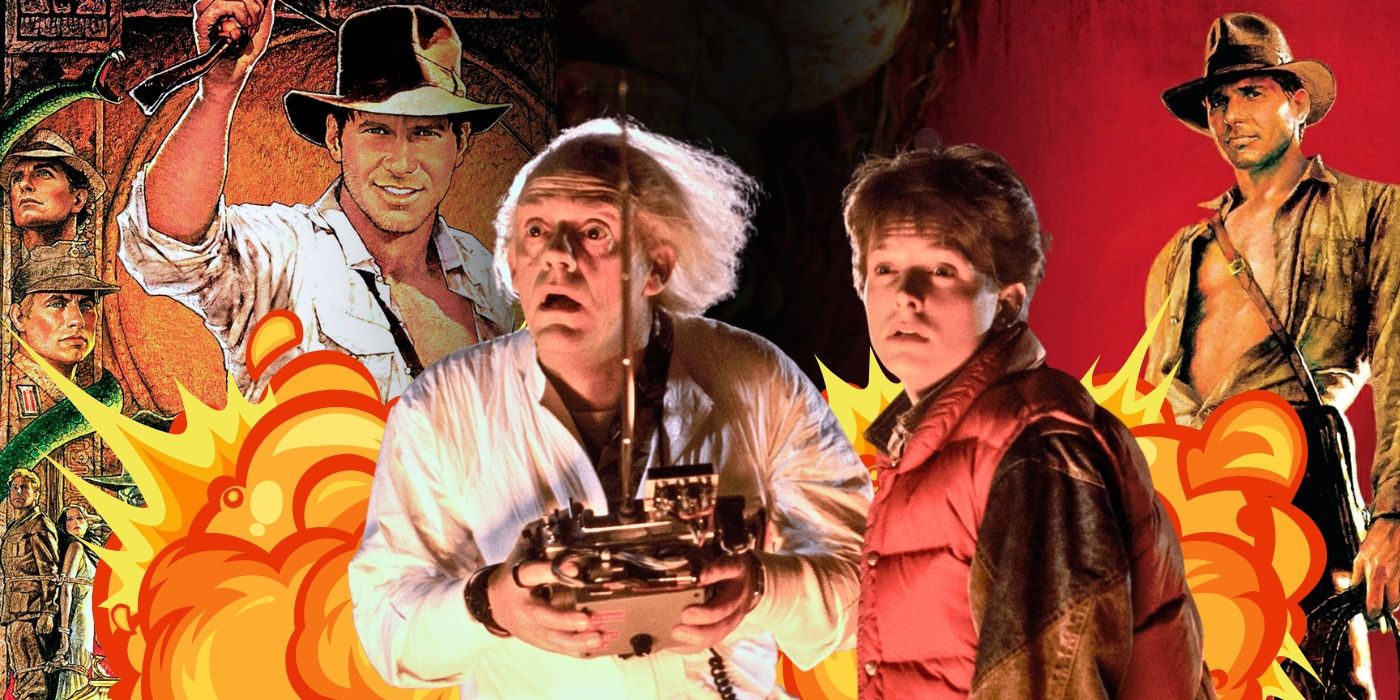With Indiana Jones and the Dial of Destiny marking the character’s long-awaited return, many fans are returning to his previous screen adventure in anticipation. 2008’s Indiana Jones and the Kingdom of the Crystal Skull was directed by Steven Spielberg and was met with lackluster reviews compared to the original trilogy. This was due in no small part to its sci-fi elements which could arguably have worked with a different execution. One element of the film that fans find difficult to defend, however, was its science-defying scene in which Indy (Harrison Ford) hides in a fridge to survive the blast of a nuclear bomb. In a scene that inspired the term “Nuking the Fridge” which became synonymous with “Jumping the Shark”, the scene sees the bomb send the fridge flying, only for our hero to roll out of it safely. But did you know this scene was very nearly used for a different Spielberg-produced film?! Yes, we almost got a Nuking the Fridge scene in Back to the Future and in another science fiction film after that.
In 1977, a young and inexperienced filmmaker named Robert Zemeckis found his way into the Amblin Productions offices, ignored the receptionist, and entered Steven Spielberg’s office without an appointment. As detailed by Spielberg himself in Tom Shone’s book Blockbuster, he respected Zemeckis’ determination, and after watching and adoring Zemeckis’ short film A Field of Honor, he hired the young filmmaker to direct his first feature. With Spielberg working as Executive Producer for the first time, the Beatlemania comedy I Wanna Hold Your Hand was written by Zemeckis and his old college friend Bob Gale. Universal Pictures allowed Zemeckis to direct under the condition that if he failed, Spielberg would step in to complete the job, but such circumstances never took place, making Zemeckis and Spielberg mutually trusted collaborators from that point onwards.
After collaborating with Spielberg again on 1941 and Used Cars, Zemeckis and Gale (or “the Bobs”) developed a time-travel comedy script titled Back to the Future. The original script was similar to the final film we know today except for a few differences in details. Namely, that the time machine was housed in a refrigerator rather than a DeLorean automobile. This meant that any ideas of reaching 88 miles per hour were yet to be conceived. Another detail that would eventually be changed from this original draft was the way in which the time machine would harness enough power to send Marty back to the future at its climax. The script saw the characters break into a nearby army base and detonate an atomic bomb, a reference to the bomb tests of the 1950s during the fear of the Cold War. That’s right, the original Back the Future script saw Spielberg “nuking the fridge” over twenty years before he did it in Kingdom of the Crystal Skull!
Universal Pictures President Sid Sheinberg greenlit the film providing the Bobs amended the script. Some requests were for the best, such as “Professor Brown” becoming “Doc Brown” and Brown’s pet chimp being changed to a dog. Marty was also written as a VHS video pirate, explaining his camcorder in the time machine test scene, but Sheinberg was unwilling to promote piracy, a crime that directly threatened their revenue. Other Sheinberg suggestions, however, were less brilliant. As Gale told the virtual 2020 Back to the Future reunion, “One day we get this memo, and it says, ‘I’ve come up with the perfect title for this movie: Spaceman From Pluto!’ And so Bob and I went to Steven, and we said, ‘What do we do?’ And he turned to his assistant and he said, ‘Let’s send Sid a memo; Dear Sid, thank you for your most humorous memo of November 14th. We all got a big laugh out of it. Keep ’em coming!’ And we knew that Sid would be too embarrassed to admit that he was serious, and we never heard about it again.”
The money saved by scrapping the nuke scenes would later come in handy for re-shoots when a deal was later struck with Family Ties’ Gary David Goldberg, and Michael J. Fox became available to replace Stoltz. Although an iconic setting for its 1950s period, the nuclear bomb town did very little to intertwine the film’s themes with its plot. Instead, the writers opted to use the already-built Hill Valley Town Square set and incorporate its central clock tower into the action. By establishing the clock tower in 1985 as being unfixed since a lightning strike 30 years prior, Marty and Doc are able to pinpoint the exact moment they need to harness the storm’s power.
Meta Data: {“keywords”:”Indiana Jones, Back to the Future, Spielberg”}
Source link
